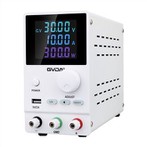Switching power supply design measures to prevent EMI
1. Minimise the area of PCB copper foil at noisy circuit nodes; e.g. drain and collector of switching tubes, nodes of primary and secondary windings, etc.
2. Keep inputs and outputs away from noisy components, such as transformer wire wraps, transformer cores, heat sinks of switching tubes, and so on.
3. Keep noisy components (e.g., unshielded transformer wire wraps, unshielded transformer cores, switching tubes, etc.) away from the edge of the enclosure, which is likely to be close to the outside earth wire under normal operation.
4. If the transformer is not shielded from electric fields, keep the shield and heat sink away from the transformer.
5. Minimise the area of the following current loops: secondary (output) rectifiers, primary switching power devices, gate (base) drive circuits, auxiliary rectifiers, and the secondary (output) rectifiers.
6. Do not mix the gate (base) drive return loop with the primary switching circuit or auxiliary rectifier circuit.
7. Adjust and optimise the value of the damping resistor so that it does not produce a ringing noise during the dead time of the switch.
8. Prevent saturation of the EMI filter inductor.
9. Keep corner nodes and secondary circuit components away from primary circuit shields or switching tube heat sinks.
10. Keep the swing nodes and components of the primary circuit body away from the shield or heat sink.
11. Keep high frequency input EMI filters close to the input cable or connector terminals.
12. Keep the high-frequency output EMI filters close to the output wire terminals.
13. Keep a distance between the copper foil on the PCB board opposite the EMI filter and the component body.
14. Put some resistors on the line of the rectifier of the auxiliary coil.
15. Connect damping resistors in parallel with the magnet bar coil.
16. Connect damping resistors in parallel at both ends of the output RF filter.
17. Allow for a 1nF/500V ceramic capacitor or also a series of resistors across the static and auxiliary windings of the primary of the transformer in the PCB design.
18. Keep the EMI filter away from the power transformer; in particular, avoid positioning it at the end of the winding.
19. If the PCB area is sufficient, leave a foot space on the PCB for the shielding windings and a place for the RC damper, which can be connected across both ends of the shielding windings. The RC damper can be connected across both ends of the shielded winding.
20. If space permits, place a small radial lead capacitor (Miller capacitor, 10 picofarads/1 kV) between the drain and gate of the switching power FET. If space permits, place a small radial lead capacitor (Miller capacitor, 10 pF/1 kV) between the drain and gate of the switching power FET.
21. Place a small RC damper on the DC output if space permits.
22. Do not place the AC socket against the heat sink of the primary switching tube.






